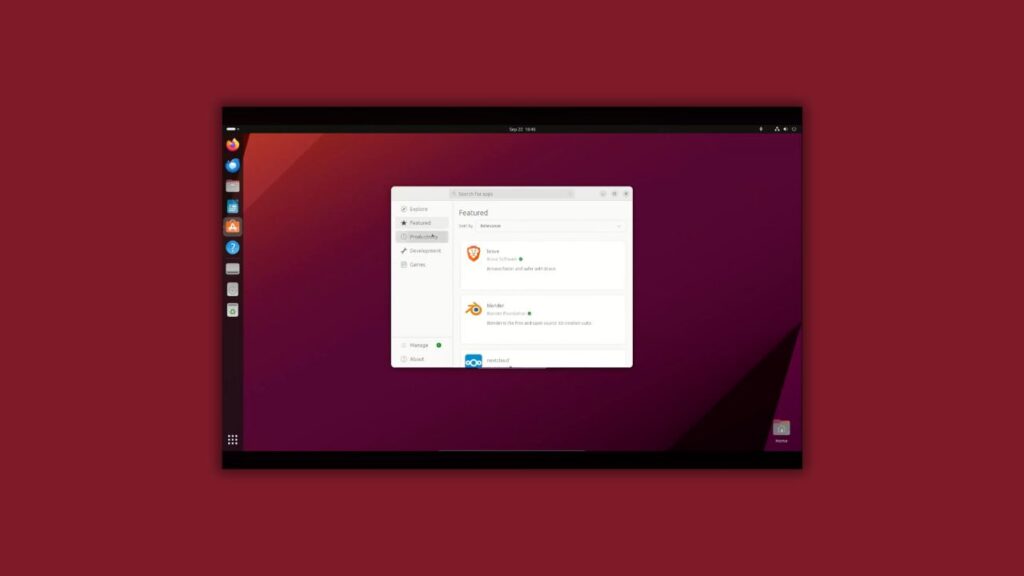Welcome to the introduction of our detailed review of Kubuntu 23.10 Beta, the latest iteration of the popular Linux distribution. In this comprehensive examination, we will delve into the new features, enhancements, and improvements that Kubuntu 23.10 Beta brings to the table. As an official flavor of Ubuntu, Kubuntu is renowned for its use of the KDE Plasma desktop environment, offering a seamless blend of stability, functionality, and aesthetic appeal.

Join us as we explore the advancements and changes in this pre-release version, providing you with insights into what the future holds for this user-friendly and versatile Linux distribution.
Booting into Kubuntu 23.10 Beta
The boot menu for Kubuntu is quite familiar, so let’s quickly boot into the live environment to explore its features. It’s always a good idea to test a beta version before committing to an installation. This way, you can identify and report any bugs without affecting your existing setup.
System Information
After booting into Kubuntu 23.10 Beta, I’m running it in a virtual machine using VMware. Let’s take a look at the system information:
- KDE Plasma Version: 5.27.8
- QT Version: 5.15.10
- Kernel Version: 6.5
- CPU: 12th gen Intel Core i5 with 4GB of RAM
- Running on VMware
System Resource Usage
Checking system resource usage in the live environment is crucial. Currently, it’s consuming approximately 1.2 GB of RAM, and the CPU usage remains below 15%, which is acceptable for a beta version.
Installed Applications and Processes
We can see all running applications and processes. The CPU graph isn’t entirely stable, which is common in beta versions. It’s essential to assess stability before installation.
Downloading Kubuntu 23.10 Beta
You can download the beta version of Kubuntu 23.10 from the official website or choose the latest images that have passed automatic testing. Be sure to download the appropriate ISO file based on your system.
Installation Process
The installation process is similar to previous versions of Kubuntu. You can choose options such as downloading updates while installing and installing third-party software for graphics and Wi-Fi hardware. Ensure you select the correct disk if you’re not using a virtual machine.
Installed Software Versions
After installation, let’s open various applications to check their versions:
- Firefox: Version 117
- LibreOffice: Version 7.6.1.2
- Dolphin (File Manager): Version 23.08.1
- Kate: Version 23.08.1
- Thunderbird (Email Client): Version 115.2.0 (Supernova)
Exploring Desktop Features
We briefly explored desktop features such as date and time settings, calendar, display configuration, power management, and keyboard settings.
System Information (Inxi)
Here is detailed system information using the Inxi command:
- Kernel Version: 6.5.05
- Desktop Environment: KDE Plasma
- Based on Ubuntu 23.10 Manticore
- Using VMware virtualization
Additional Commands
We also used commands like inxi -B and cat /etc/issue to gather information about the system.
Conclusion
Kubuntu 23.10 Beta seems stable during this initial assessment. However, it’s crucial to remember that beta versions may have bugs, so it’s recommended to wait for the stable release for normal usage. Testing in a live environment can help you decide whether to install it on your system.
Download
Name | Date | Size | |
|---|---|---|---|
| Parent Directory | – | ||
| SHA256SUMS | 2023-09-28 08:06 | 91 | |
| SHA256SUMS.gpg | 2023-09-28 08:06 | 833 | |
| mantic-desktop-amd64.iso | 2023-09-28 08:05 | 3.7G | |
| mantic-desktop-amd64.iso.zsync | 2023-09-28 08:06 | 7.3M | |
| mantic-desktop-amd64.list | 2023-09-28 08:05 | 10K | |
| mantic-desktop-amd64.manifest | 2023-09-28 07:55 | 60K |